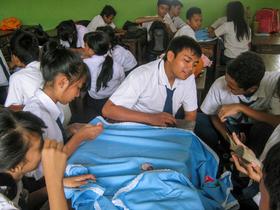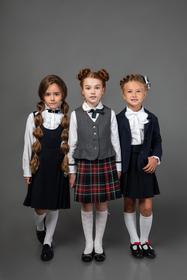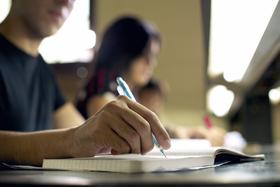For the 2025-26 school year, there are 2 public schools serving 593 students in Nashua-Plainfield Community School District. This district's average testing ranking is 5/10, which is in the bottom 50% of public schools in Iowa.
Public Schools in Nashua-Plainfield Community School District have an average math proficiency score of 73% (versus the Iowa public school average of 68%), and reading proficiency score of 70% (versus the 70% statewide average).
Minority enrollment is 6% of the student body (majority Black), which is less than the Iowa public school average of 29% (majority Hispanic).
Overview
This School District
This State (IA)
# Schools
2 Schools
1,320 Schools
# Students
593 Students
501,674 Students
# Teachers
43 Teachers
34,800 Teachers
Student-Teacher Ratio
14:1
14:1
Student By Grade
District Rank
Nashua-Plainfield Community School District, which is ranked within the bottom 50% of all 325 school districts in Iowa (based off of combined math and reading proficiency testing data) for the 2022-2023 school year.
The school district's graduation rate of 85% has decreased from 90% over five school years.
Overall District Rank
#176 out of 327 school districts
(Bottom 50%)
(Bottom 50%)
Math Test Scores (% Proficient)
73%
68%
Reading/Language Arts Test Scores (% Proficient)
70%
70%
Science Test Scores (% Proficient)
60-64%
63%
Graduation Rate
85%
90%
Students by Ethnicity:
Diversity Score
0.12
0.47
% American Indian
n/a
n/a
% Asian
n/a
3%
% Hispanic
1%
13%
% Black
1%
7%
% White
94%
71%
% Hawaiian
n/a
1%
% Two or more races
4%
5%
All Ethnic Groups
District Revenue and Spending
The revenue/student of $14,980 in this school district is less than the state median of $16,468. The school district revenue/student has stayed relatively flat over four school years.
The school district's spending/student of $12,983 is less than the state median of $16,042. The school district spending/student has stayed relatively flat over four school years.
Total Revenue
$9 MM
$8,262 MM
Spending
$8 MM
$8,048 MM
Revenue / Student
$14,980
$16,468
Spending / Student
$12,983
$16,042
Best Nashua-Plainfield Community School District Public Schools (2025-26)
School
(Math and Reading Proficiency)
(Math and Reading Proficiency)
Location
Quick Facts
Rank: #11.
Nashua-plainfield Elementary School
(Math: 80-84% | Reading: 70-74%)
Rank:
Rank:
8/
Top 30%10
621 Panama St
Nashua, IA 50658
(641) 435-4114
Nashua, IA 50658
(641) 435-4114
Gr: PK-5 | 285 students Student-teacher ratio: 15:1 Minority enrollment: 8%
Rank: #22.
Nashua-plainfield Junior-senior High School
(Math: 69% | Reading: 69%)
Rank:
Rank:
4/
Bottom 50%10
612 Greeley St
Nashua, IA 50658
(641) 435-4166
Nashua, IA 50658
(641) 435-4166
Gr: 6-12 | 308 students Student-teacher ratio: 13:1 Minority enrollment: 5%
Frequently Asked Questions
How many schools belong to Nashua-Plainfield Community School District?
Nashua-Plainfield Community School District manages 2 public schools serving 593 students.
What is the rank of Nashua-Plainfield Community School District?
Nashua-Plainfield Community School District is ranked #182 out of 325 school districts in Iowa (bottom 50%) based off of combined math and reading proficiency testing data for the 2022-2023 school year.
What is the racial composition of students in Nashua-Plainfield Community School District?
94% of Nashua-Plainfield Community School District students are White, 4% of students are Two or more races, 1% of students are Hispanic, and 1% of students are Black.
What is the student/teacher ratio of Nashua-Plainfield Community School District?
Nashua-Plainfield Community School District has a student/teacher ratio of 14:1, which is equal to the Iowa state average of 14:1.
What is Nashua-Plainfield Community School District's spending/student ratio?
The school district's spending/student of $12,983 is less than the state median of $16,042. The school district spending/student has stayed relatively flat over four school years.
Recent Articles

Charter Schools vs Public Schools 2025: Key Differences & Trends
Explore updated 2025 insights comparing charter schools vs public schools, enrollment, academic outcomes, funding, and real-world examples for families and educators.

Are Public Schools Ready for the 21st Century? 2025 Update
Explore 2025 insights on whether public schools are ready for the 21st century, covering performance, technology, equity, funding, and future-ready learning.

Public School Open House & Enrollment Season Guide
A parent-focused guide to the public school open house and enrollment season, with expert questions, timelines, and decision tips.





